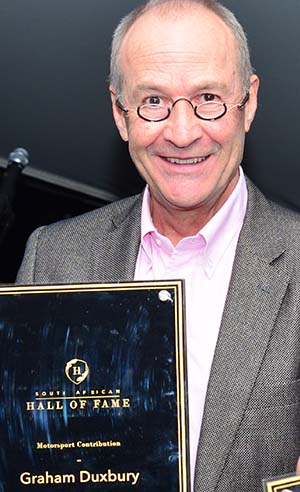At the dawn of the automotive era, motor races were held between cities and run over ordinary roads, open to the public. The Paris – Vienna race of 1902 and the infamous Paris – Madrid race of 1903 are examples.
 By Graham Duxbury
By Graham Duxbury
In the latter event, a number of fatalities occurred involving spectators, pedestrians and drivers. Subsequently, it was wisely decided to hold races on roads closed to the public for the duration of the competition.
Circular routes were then planned allowing the start and finish points to be at the same location. The 121km German Kaiserpreis circuit in the Taunus mountains and the French circuit at Dieppe (77 km) set the standard for these early race tracks.
The first race to be named a “Grand Prix” took place in 1906 in France on a triangular circuit near Le Mans. Each lap covered 103km and six laps were run on each day of the two-day event.
As speeds rose and the policing of these long courses became increasingly difficult, if not impossible, so GP racing moved to shorter tracks – still using public roads. One such circuit was located in the Ardennes forest in Belgium. The 15km course linked the towns of Francorchamps, Malmedy and Stavelot.
The Belgian race organisers were proud of their track’s status as the fastest road circuit in Europe at the time. This was the era in which circuit owners did their best to build tracks with ever-higher average speeds.
For instance, the old Hockenheim circuit in Germany’s Rhine valley, Monza (the combined road and banked oval track) and the Imola circuit in Italy (among others) fell into this category with long, flat-out sections linked by high-speed corners.
Alarmingly, there were often houses, trees, poles, barriers or other solid, unforgiving obstacles located next to the tracks.
Over time, serious incidents, accidents and unfortunate fatalities persuaded organisers to slow the circuits. Two (later three) chicanes were added at Hockenheim, two chicanes appeared at Monza (now without the dangerous banked section) and later drastic revisions were made to Imola, including the a left-right-left chicane at the Tamburello corner, scene of Ayrton’ Senna’s accident in 1994.
This tragedy heralded a time when F1 went to great lengths to reduce cornering speeds. Many circuits changed their layouts adopting ubiquitous “Senna S” corners as a symbol of this movement which was given momentum by the great champion’s memory.
Now, are stricter safety regulations, involving more advanced chassis construction featuring the “halo” laying the groundwork for a return to high-speed racing? And are modern circuit designs, supported by hi-tech simulation techniques, paving the way for new standards in on-track safety?
While traditional and popular road courses, such as Silverstone, Spa-Francorchamps and Suzuka have cemented their positions on the F1 calendar, we have, over the past two decades, witnessed the arrival of a number of temporary circuits using existing city streets. These include the Marina Bay Circuit in Singapore, Albert Park in Australia and the Baku City Circuit in Azerbaijan.
Temporary circuits will continue to feature on the calendar, perhaps unsurprisingly, in view of the high costs associated with building new, permanent circuits with appropriately-appointed pits, hospitality and grandstand facilities.
While the tight and twisty streets of Monte Carlo continue to form the archetypal temporary street circuit, there is a newcomer poised to challenge the premier status of the Grand Prix of Monaco, first run in 1924.
This is the Jeddah Street Circuit, the host the Saudi Arabian GP to be held later this year.
The contrast between the Monaco and Jeddah circuits is stark. Monaco is the slowest circuit on the calendar, with the current average speed close to 160 km/h. Jeddah, on the other hand, promises to be not only the fastest street track but the second-fastest track of all (behind only Monza). Simulations suggest average speeds exceeding 250km/h could be witnessed in Jeddah.
I’m sure countless F1 fans will welcome the new circuit, the sport’s contemporary ideas and echo the reported words of Ross Brawn, F1’s MD of motorsport: “We don’t want Mickey Mouse circuits. We don’t want those old classic street circuits with 90-degree turns. We want fast sweeping circuits, circuits which are going to challenge the drivers – and we want circuits where we can have wheel-to-wheel racing.”
